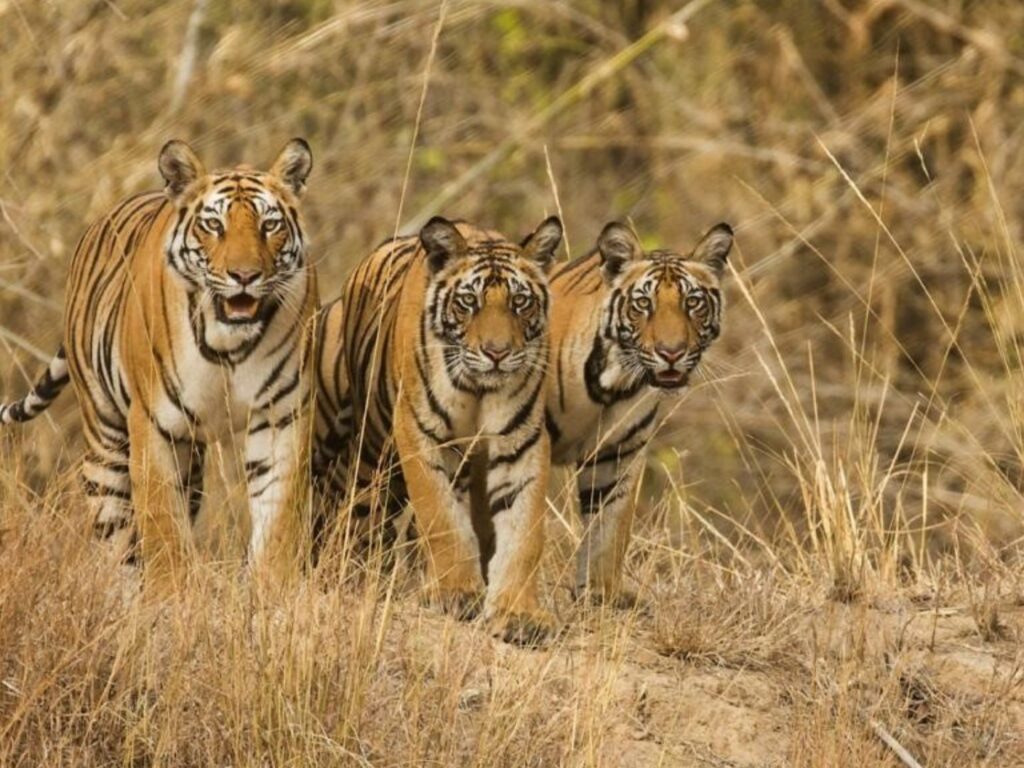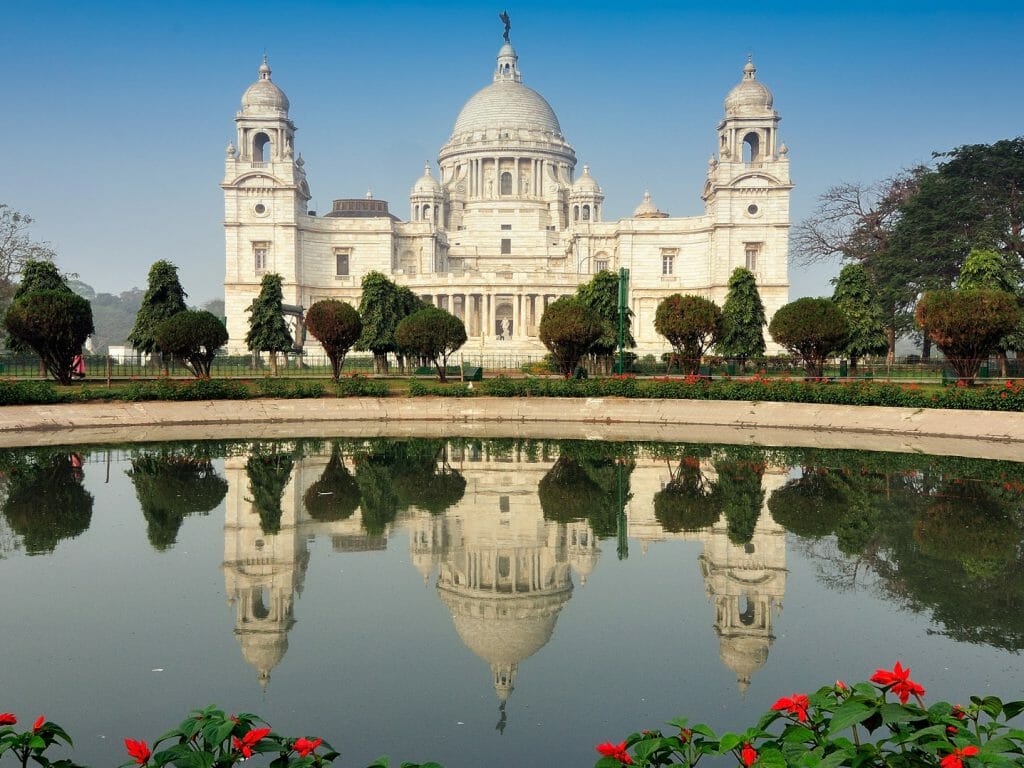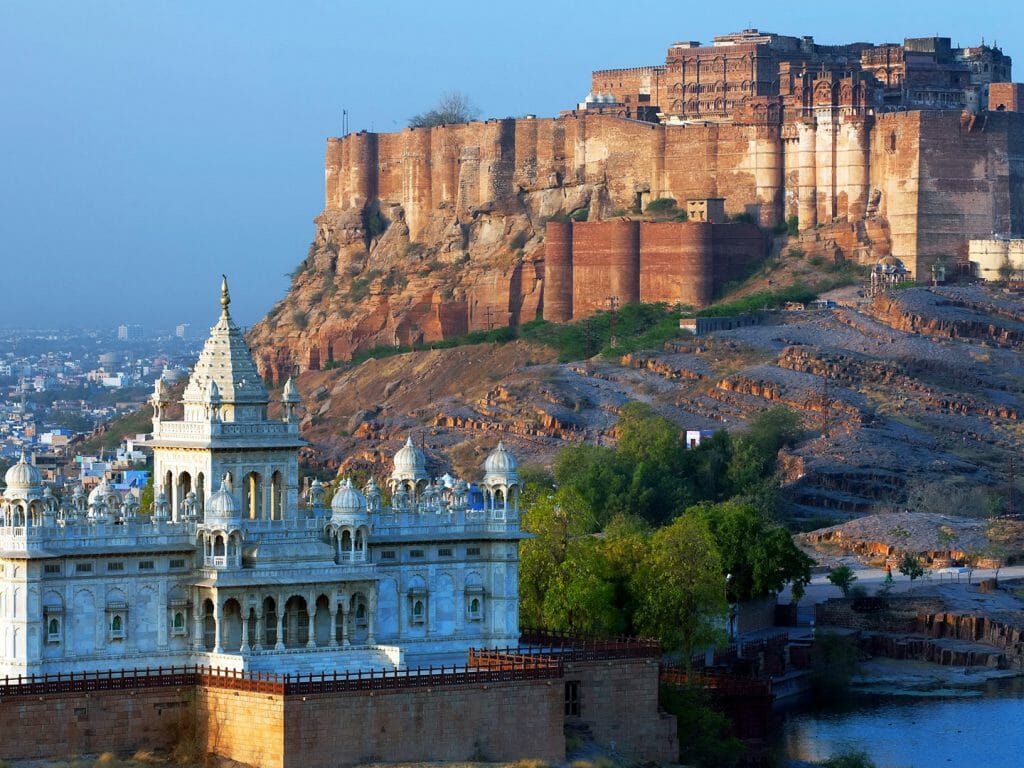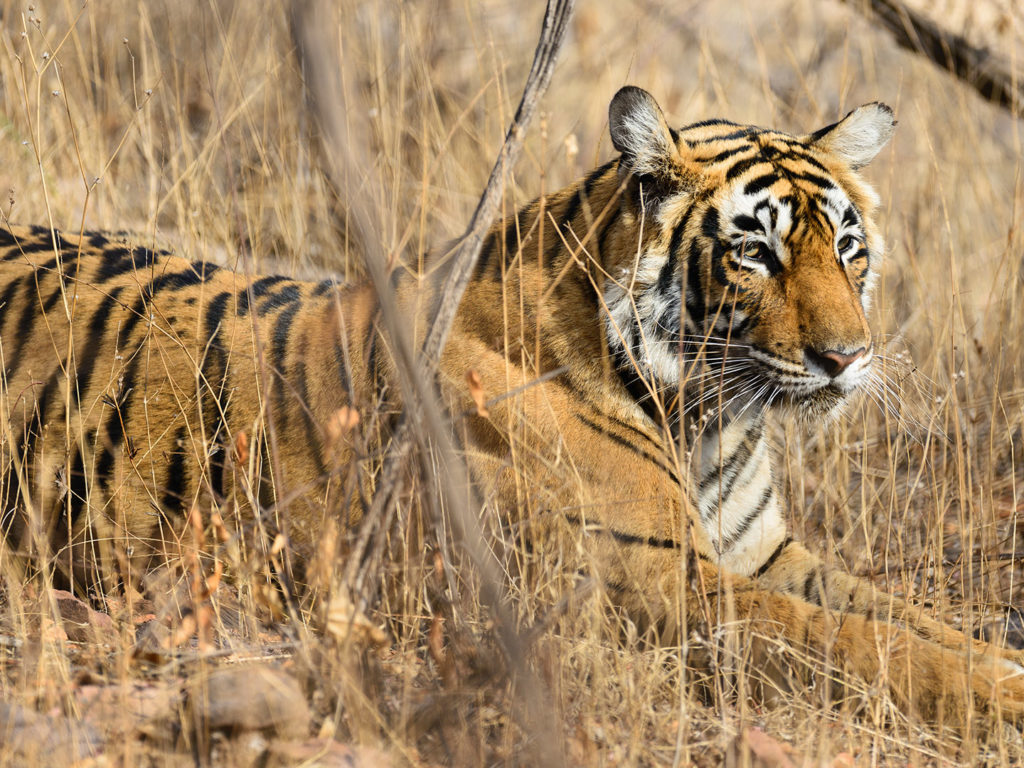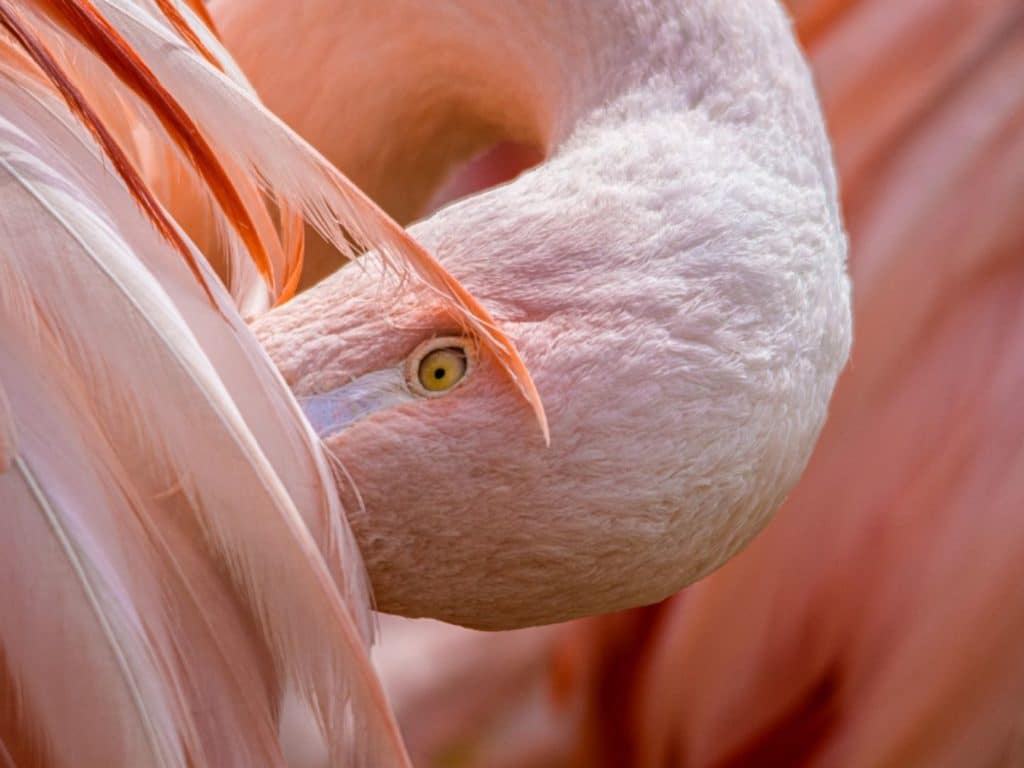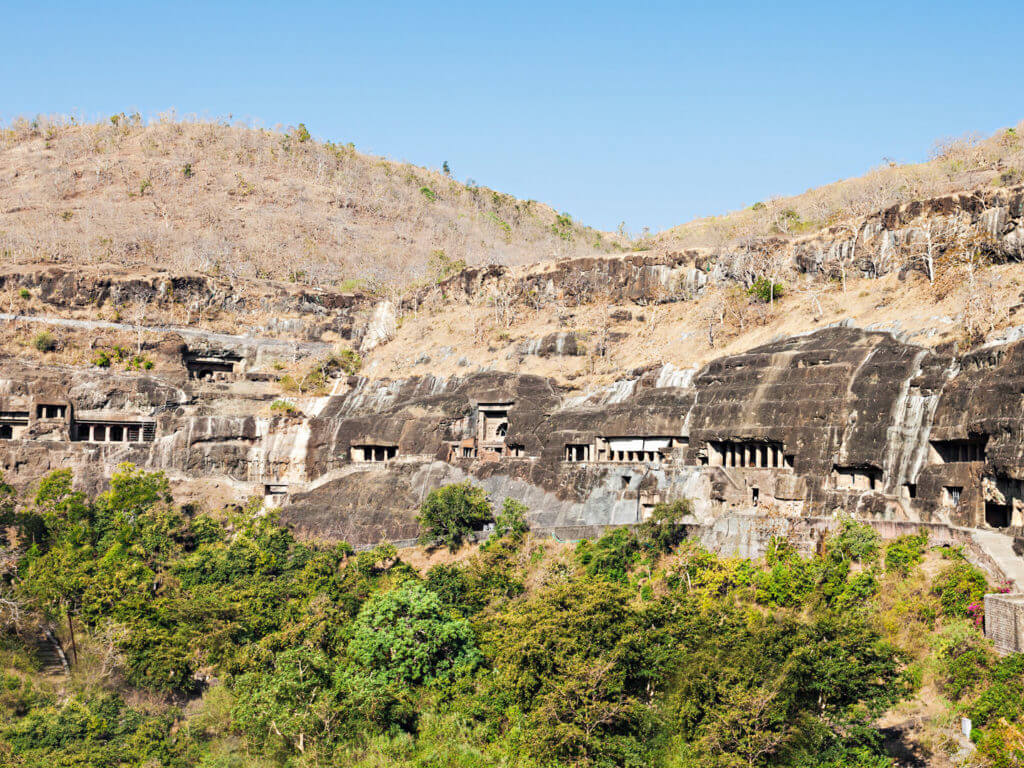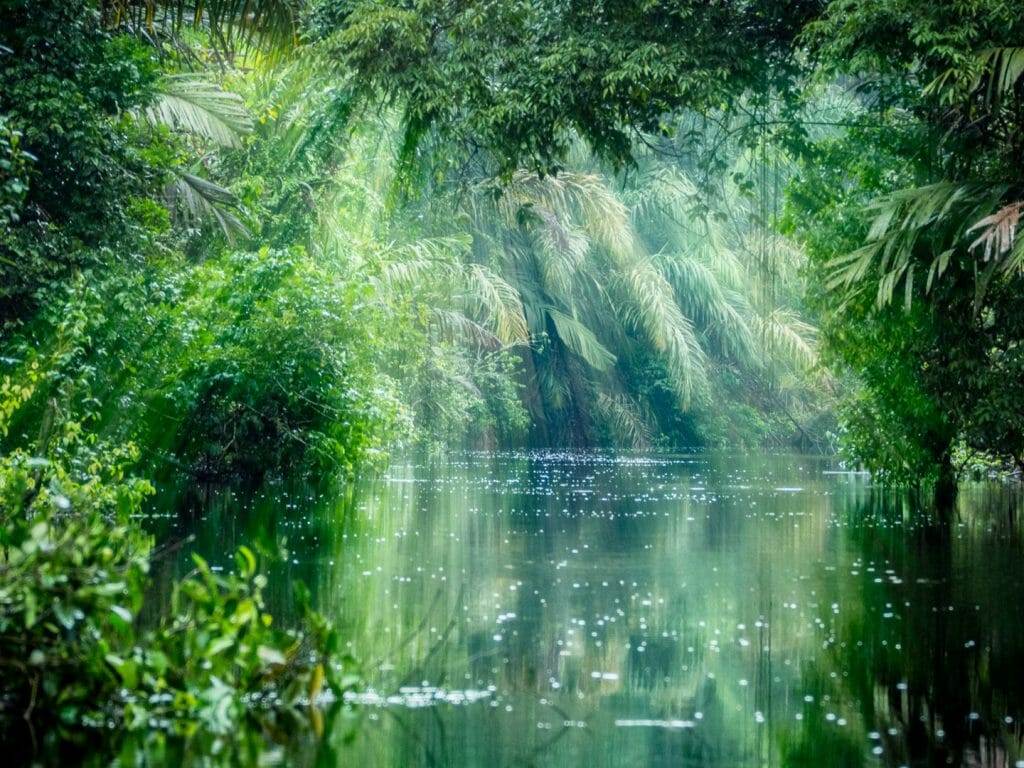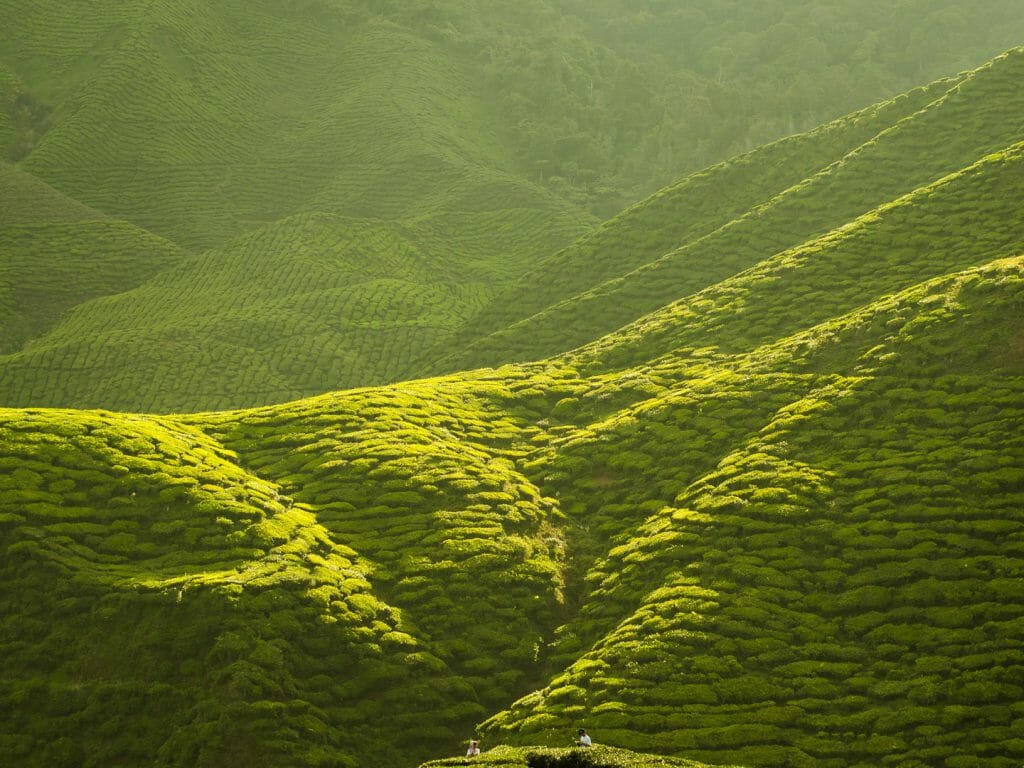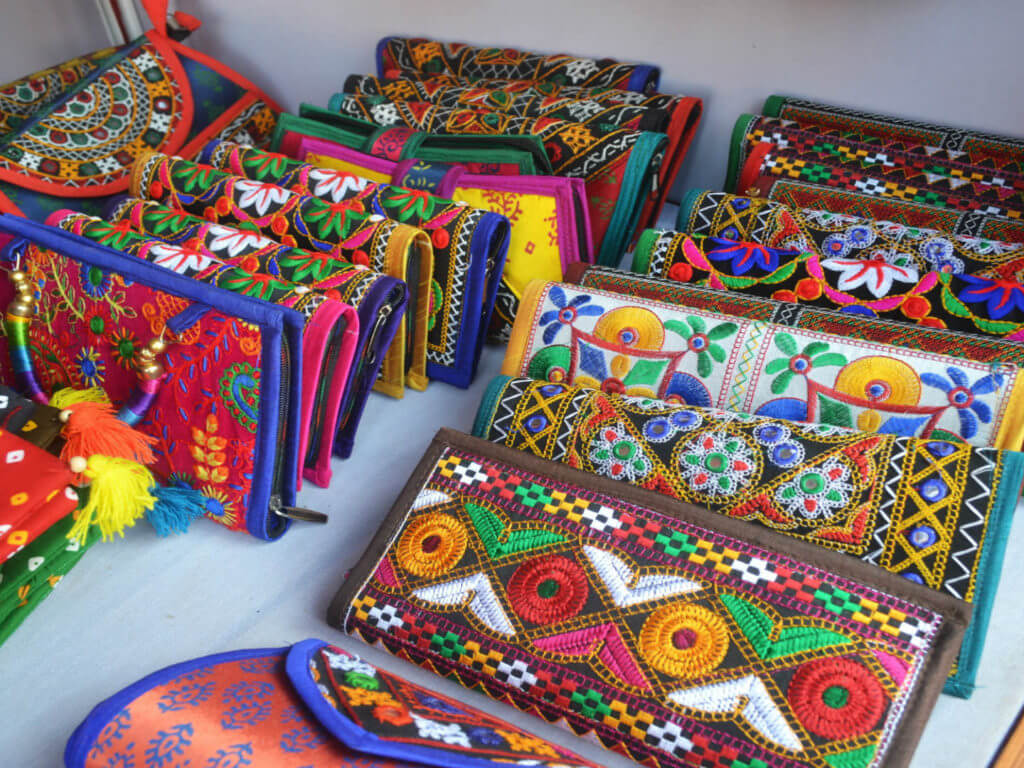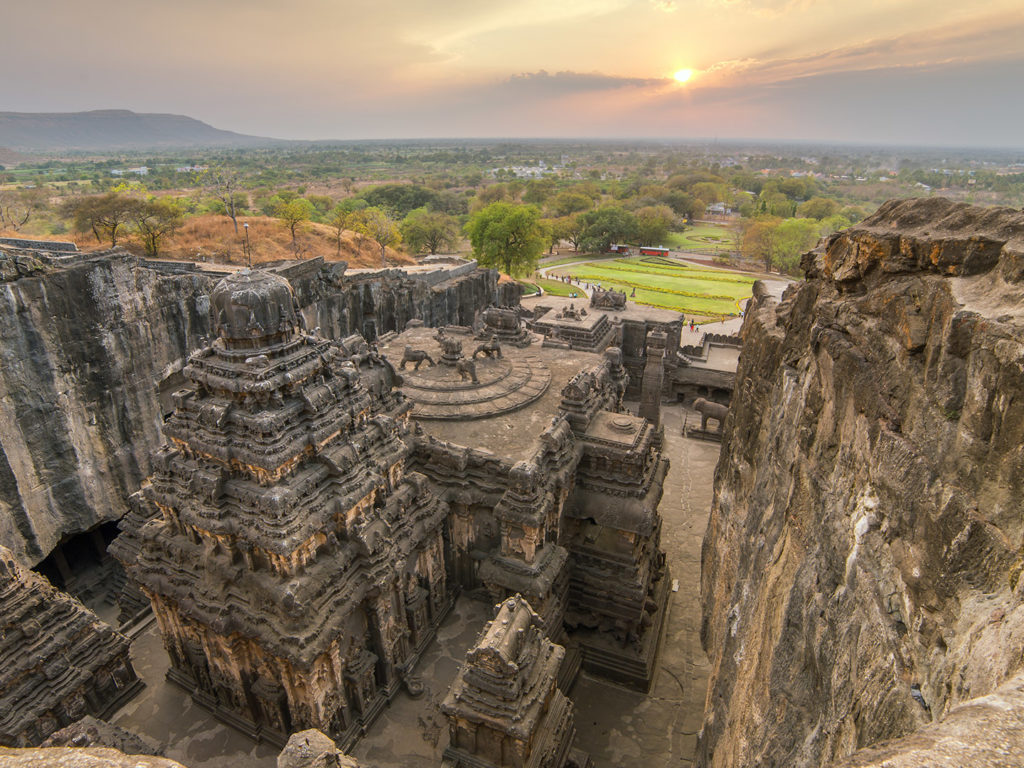There was a knock at the door and my favourite honey, lemon and ginger tea was delivered to my hut on a silver tray. As I drank it down, I began to think that the concoction could be used as an analogy for India. Honey for the people – sweet, grounded and comforting, lemon for the contrast, the life and the edge and finally ginger for the spice, the food and the history.
And then I came around, it was 5 am and I wasn’t dressed for the morning drive. I quickly realised that there was no time to shower and make myself presentable – this was my first safari and my first visit to this area of India. Madhya Pradesh is remote, hot and rural. Forget the honking of horns and the crowded images of India’s cities – this was different.
It was March, the mornings were cold and the tourists were long gone, the heat of the afternoon was soaring and the mahua trees were in flower. Everywhere I looked on the way to the park gate ladies were carrying huge baskets upon their heads, dressed in the finest silk saris in bright vivid colours. The image optimised rural India – it was a photographers dream. I quickly realised that this was the best time to visit Kanha National Park.
The sticky sweet flowers of the mahua tree bring life to the forest. Everyone and everything is busy collecting the flower in order to enjoy its heady alcoholic effects. Farming families have licence to brew the flowers to make a strong whisky type drink which they can sell at local markets. At this time of year, it is not uncommon to find sloth bears, samba deer, spotted deer, barasingha (swamp deer), langur monkeys and wild boar eating side by side under the branches of a mahua tree.
I had been warned that the mornings would be cold and as we drove through the park gates and into the thick Saal forest the cold wind rushed through my clothes – I was glad that I had managed to find the time to ‘layer up’ during my morning sprint around the hut. I had no idea what to expect from my first game drive. Thoughts and questions were rushing around my head as we began to travel deeper into the park – Would there be a toilet? Would we stop for something to eat? What if I get colder, what if I get too hot? What if I don’t see a tiger but what if I do?!
I felt as though the park guide and naturalist wanted me to see a tiger with every inch of their bodies, they live and breathe the park, they understand the animals and the language they use. They decode calls from all directions, hearing noises barely audible to the untrained ear. From them, I learnt that Jungle Book’s ‘Baloo’ was the name for a sloth bear in Hindi and that Indian rollers are my new favourite birds.
As the sun came up and the heat of the day was fast approaching we decided to stop for breakfast, our naturalist pulled into a clearing in the forest. We watched as he unloaded a breakfast fit for a king – an abundance of freshly baked muffins & cookies, fruit, paranthas with pickle (pan-fried flatbread – a typical north Indian breakfast) and a flask of steaming of hot chai were all carefully arranged on cheesecloth upon the bonnet of our jeep. As I washed the delicious treats down with the syrupy chai, my mind settled, I was warm, refreshed and ready to face the jungle again.
I was told that the overbearing heat brings the tigers out of the bush in search of water, so half of me hoped for a scorcher and the other half of me was hoping the sun went easy on us that day. By that point in the morning, I was well and truly bitten with the tiger bug. My camera had not left my hand, I had taken pictures of nearly everything that moved but now I was in search of more. I had shocked myself, even though I knew that the chance of seeing a tiger was slim, I still wanted to see one and I didn’t want to leave the park until I had. With only 89 tigers living in 940 square kilometres, I knew it was a going to be a challenge.
As we whizzed around the park following calls from all around with no results my enthusiasm began to dwindle. Not only that, I could see the disappointment growing on my guide and naturalists faces and I felt sad for them – they knew what I was missing. It was at that low point that we decided to rest for a short while in the shade, lucky for us a pair of peacocks were fighting and showing their feathers and for a few moments, I was mesmerised. My daze was broken by a langur monkey that was sat right beside us; he was grinding his teeth so hard that it was making my toes curl.
The naturalist shot up and out of his seat as a leopard appeared from the bush and walked nonchalantly down the track towards us, saliva falling from his mouth. As he got closer, my heart raced. It was my first sighting of a wild cat and I could never have anticipated how it would make me feel. The guide sensed my fear and placed a reassuring hand on my shoulder. The naturalist slowly turned and whispered to me ‘‘it is very rare to see a leopard walking along the forest path like this, it is acting completely out of character so don’t make any sudden movements. Don’t be nervous… just enjoy it!’’.
Those ten minutes of my life have now become one of the most exhilarating moments I have ever experienced. Given the chance I would relive that moment, again and again, it was pure excitement – it was beyond the ordinary. I had forgotten all about my desperate hunt for a tiger, I had witnessed something far more mysterious, I had shared a moment of my life with one of the most elusive creatures on the planet – a real life Bagheera.


